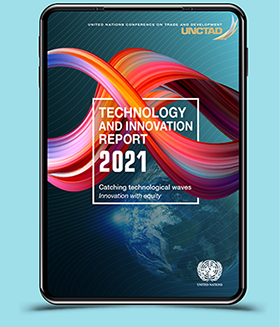
Catching technological waves
The great divides between countries
Human development has been spurred by changes in technology. But so has inequality. Today's staggering inequalities began to appear with the industrial revolution. The pace of technological change is accelerating due to digitalization and frontier technologies. New technologies can have severe downsides if they outpace a society's ability to adapt.
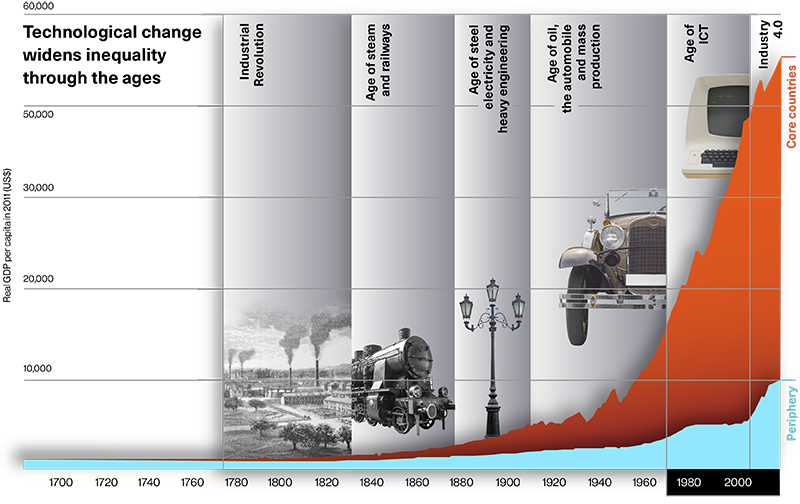
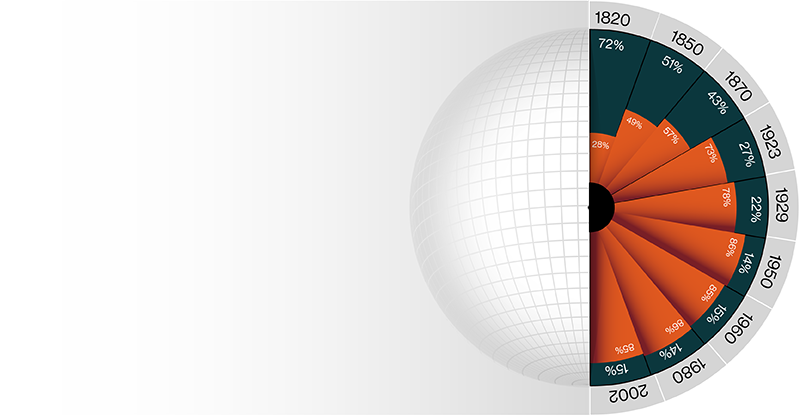
Every spurt of progress has been associated with sharper inequality between countries.
Between 1820 and 2002, the contribution of between-country inequality to global inequality rose from 28% to 85%. The outcomes for one generation have affected the opportunities for the next - resulting in intergenerational transmission of inequalities.
![]() Inequality between countries
Inequality between countries
![]() Inequality within countries
Inequality within countries
The Technology and Innovation Report 2021 critically examines the possibility of frontier technologies such as AI, robotics and gene-editing widening existing inequalities and creating new ones. Frontier technologies are essential for sustainable development, but they also could accentuate initial inequalities. It is up to policymakers to reduce this risk and make frontier technologies contribute to increasing equality. Low-and middle-income developing countries and the least developing countries cannot afford to miss the new wave of rapid technological change.
Forging ahead at the digital frontiers
This report covers 11 frontier technologies:
As a group, these 11 technologies already represent a
$350-billion market, which by 2025 could grow to over $3.2 trillion
Only a few countries currently create frontier technologies, but all countries need to prepare for them. To assess national capabilities to equitably use, adopt and adapt these technologies the Technology and Innovation report 2021 has developed a 'readiness index.' The index comprises five building blocks: ICT deployment, skills, R&D activity, industry activity and access to finance.
In general, the economies most ready are in Northern America and Europe while those least ready are in sub-Saharan Africa.
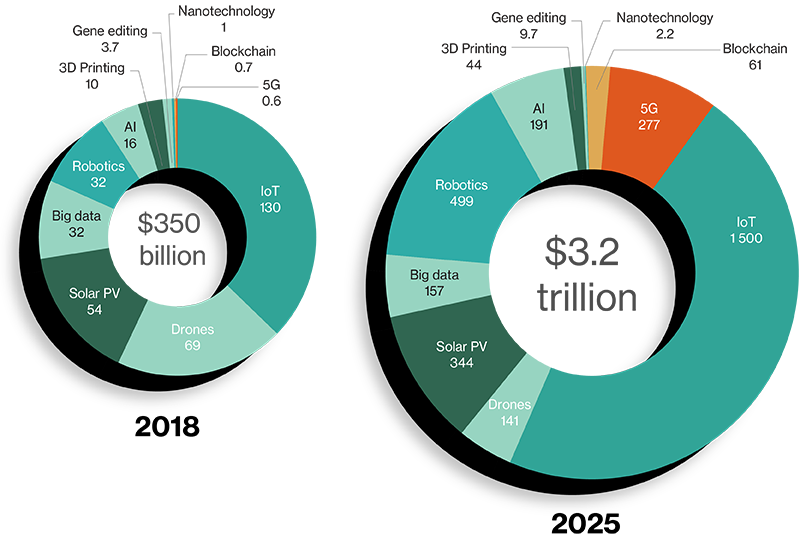
A country readiness index
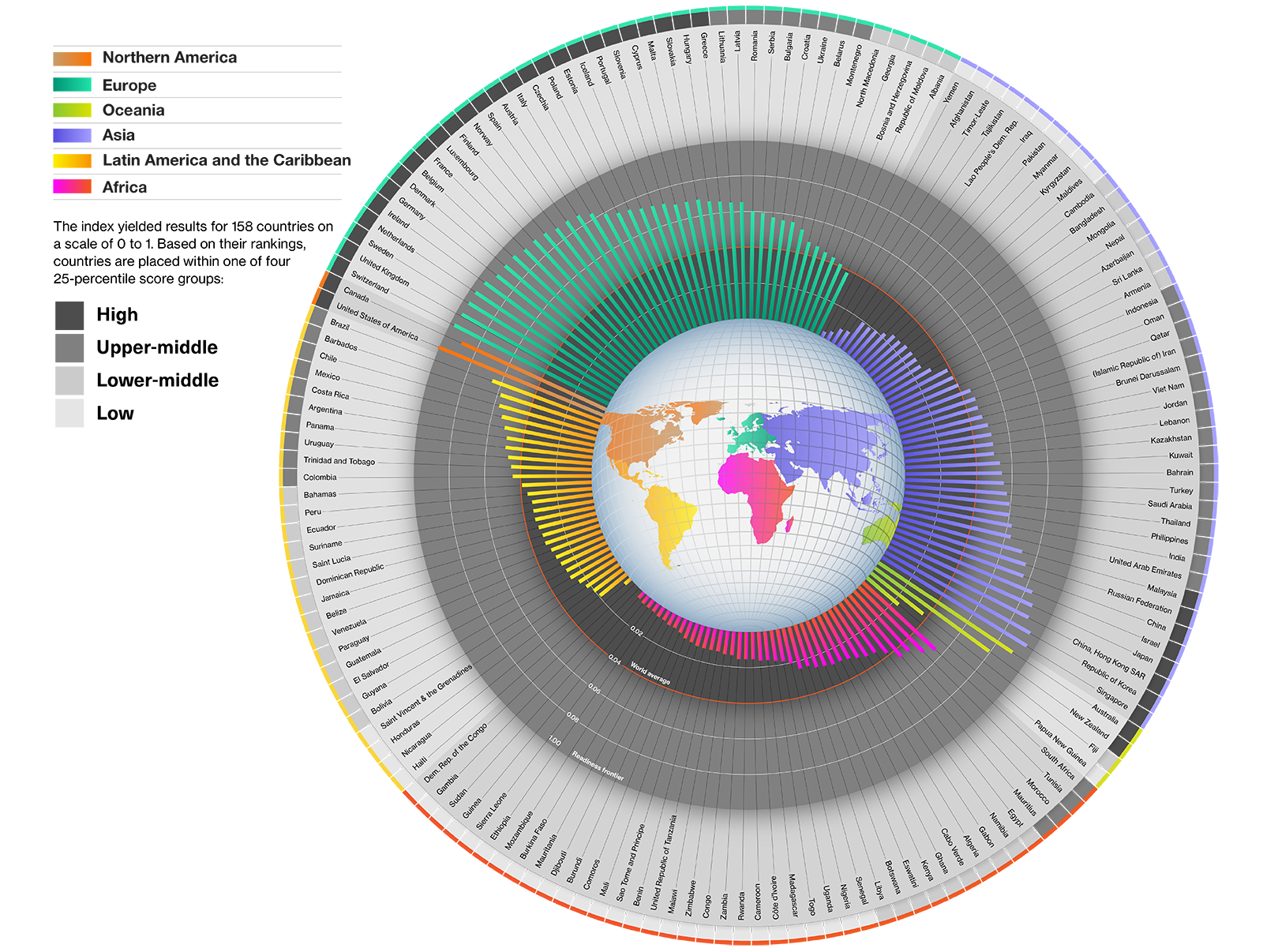
Technology and Innovation Report 2021
The five "As" of technology access
Challenges faced by developing countries with frontier technologies
Humans and machines at work

Technological change impacts inequalities through its effect on jobs, wages and profits.
To benefit from frontier technologies, countries need to promote their use, adoption and adaptation, while addressing their potential adverse effects.

Developing countries face particular challenges:
|
|
|
|
|
|
|
|
|
|
Today, major concerns are related to risks of:
|
|
|
|
|
|
|
|
|
|
|
|
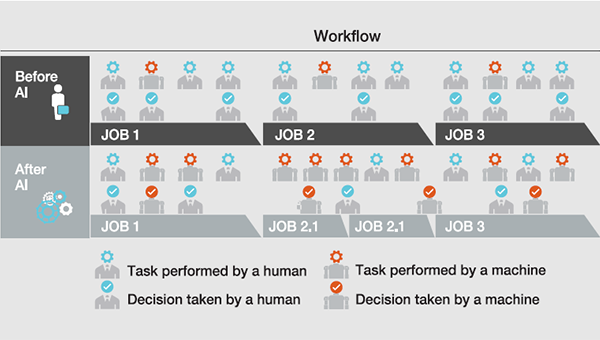
Innovation
with Equity
Technological progress is essential for sustainable development but can also perpetuate inequalities or create new ones.
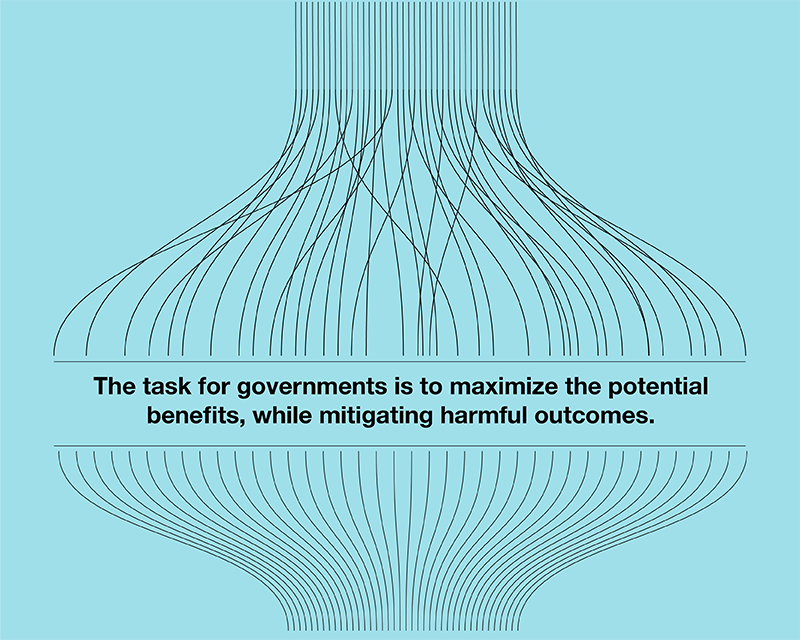
The basic requirements are effective national governance to guide technological change, international cooperation for strengthening a global framework for STI for development, and vigorous citizen activism to keep the SDGs as central guiding principles.
Key policy areas need special attention:
-
Policymakers should direct technological change towards meeting societal needs and reducing inequalities.
-
Developing countries should adopt frontier technologies while continuing to diversify their production bases by mastering existing technologies.
-
Strengthening social protection systems to provide safety nets to workers who may lose their livelihoods.
International cooperation should:
- Build stronger national capacities in STI
- Smooth technology transfer
- Increase women’s participation
- Improve foresight and technological assessment
- Promote inclusive



